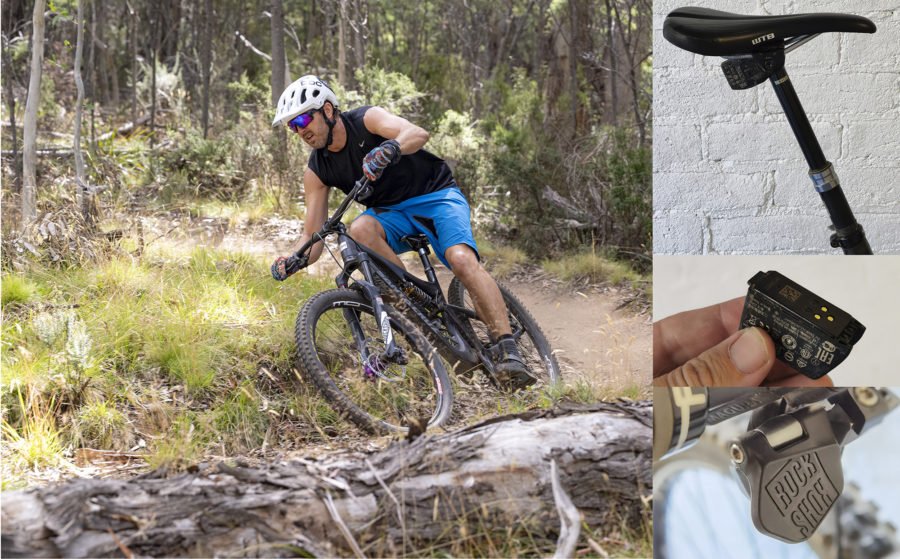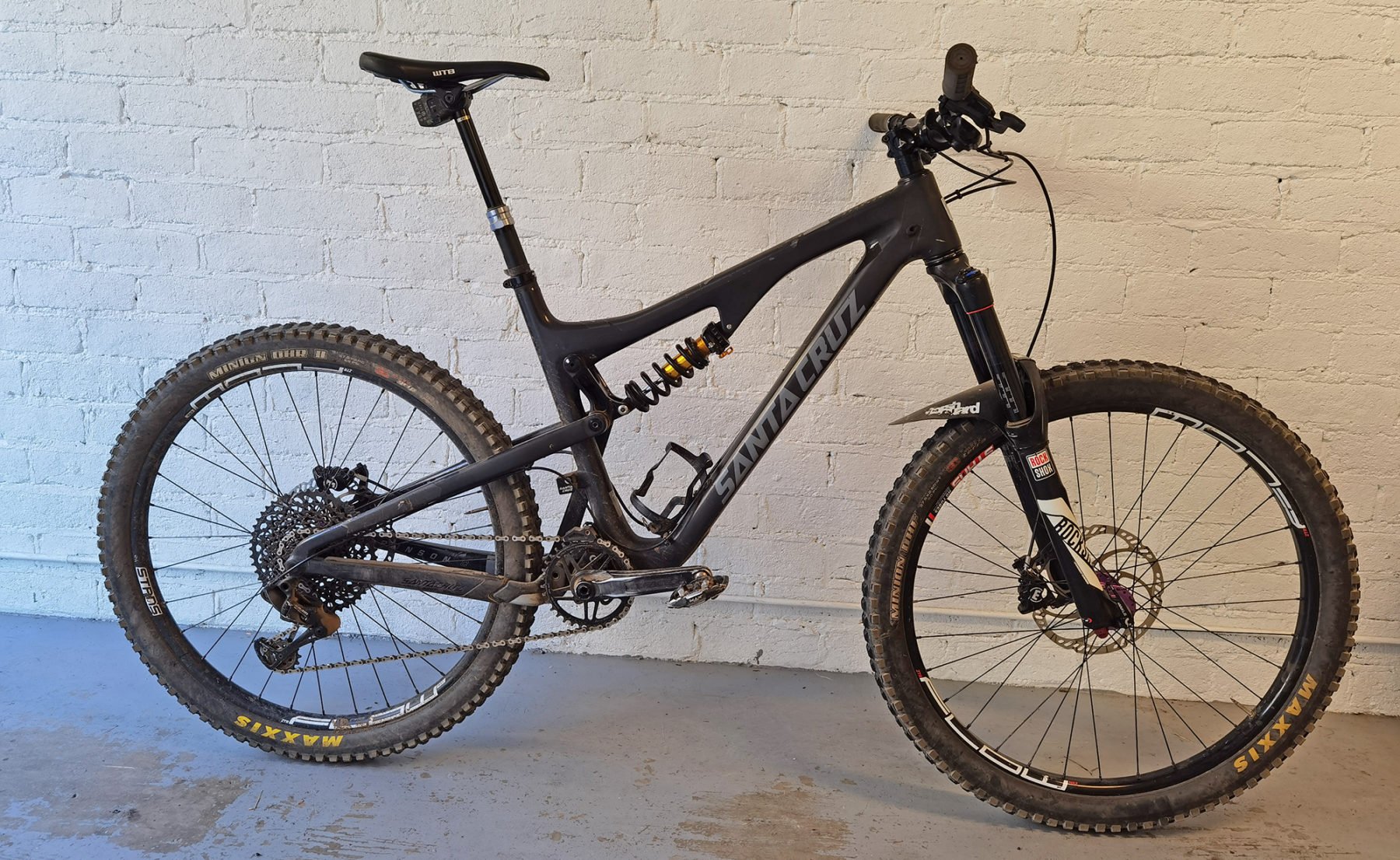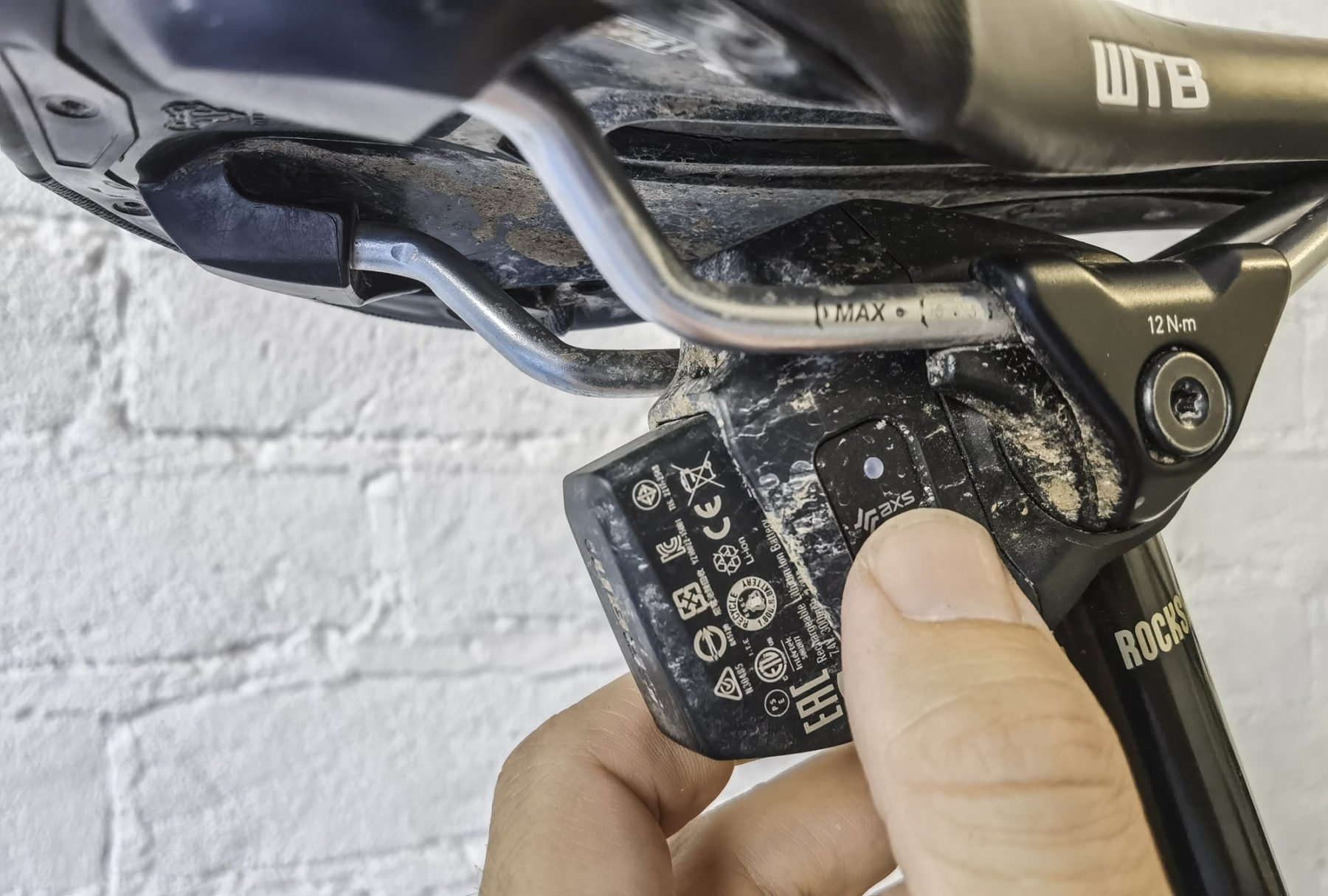RockShox Reverb AXS Dropper Post: Tested

Let’s not beat around the bush. The new RockShox Reverb AXS dropper post is pricey. In fact, it is ridiculously, prohibitively, stupidly, pricey. At close to $1300 the seatpost is twice the price of the regular Reverb Stealth (which is costly enough on its own) and nearly one-fifth the cost of a semi-decent all-mountain rig. But it is also good. And I mean damned good. The kind of good that makes other dropper posts look like dysfunctional pogo sticks. So, if you have bottomless pockets of cash then I’ll save you a read; go out and buy one now. But if you don’t fly to your local trails from your super-yacht then read on and decide for yourself if the price is worth the prize.
Design
The first thing you may notice with the RockShox Reverb AXS dropper is this seatpost has no cables. Let me just say that again: this seat-post has no cables! No hoses, no hydraulic lines; in fact, nothing you need to route through the frame. You can install the post on any bike and 60 seconds later have a functioning dropper post. Believe it or not, this might just be the one-post-to-rule-them-all, because we can now swap and change between bikes whenever we feel the whim. I already hear the sceptics, “If it appears too good to be true, then most likely it is”. Except this time, it’s not. It’s a hose-less heaven.

Without a physically connected actuator, the Reverb AXS uses SRAM’s encrypted wireless network instead (as featured in SRAM’s eTap/AXS wireless tech for road and mountain bikes). The pairing and set-up of the seatpost & RockShox AXS™ handlebar controller is as easy as pushing a button on the seatpost, then one on the controller, and it’s done. It’s that easy. Of course, if you want to get nerdy, feel free to connect to SRAM’s app via Bluetooth and start customising, check battery levels, or even receive service notifications. The Reverb AXS is available in diameters of 30.9mm, 31.6mm and 34.9mm, with drop-heights of 100mm, 125mm, 150mm and 170mm.
With the seatpost installed it’s time to ride right? Wrong. There is a caveat to accessing all this technology: it requires power. The Reverb remote uses a tiny long-lasting CR2032 watch battery, while the seatpost itself is powered by a removable 24g, 300mAh eTap/AXS rechargeable lithium-ion battery.
SRAM promotes the battery as lasting 40 hours and during our evaluation it lasted weeks without a charge. I accidentally let it run dry once, but on plugging the charger into my car’s USB outlet on the 10-minute drive to the trailhead, I ended with enough juice to ride for a good few hours. The seatpost and remote include a small LED that glows red, orange or green to display remaining battery life and only take an hour to charge, but in a perfect world you will have a fully charged second battery (RRP $80.00) to roll out the door with, for that ‘just in case’ moment.

The head of the seatpost has all the electronics and fandangled tech stuff bundled into an IPX7 rated housing (it can survive immersion in one metre of water for up to 30 minutes) and uses a side clamp mechanism to accept 7mm rails, and a T25 bolt to adjust saddle angle. We found no creaking or slippage on the rail clamps and rode in some solid monsoonal storms with no water ingress issues.
At 700g (including battery), the AXS model is certainly no lightweight, but nor is it a heavyweight: if you’re a gram-counter it comes in at least 100g heavier than the Reverb Stealth.
In the field
Aside from the ease of installation, the ‘hero factor’ in the AXS system is the lightning-fast responsiveness. There is little to no lag between the trigger and the actuation of the seatpost. The AXS handlebar lever has no throw but is rather an oversized on/off paddle. We wondered whether a lack of feel might become an issue but found the opposite; the responsiveness of the unit made minor height adjustments easy and I personally loved the size of the paddle which can be used even over the rockiest of terrain.

In the past we’ve had enough issues with hydraulic Reverbs to be wary, but the AXS gets Reverb’s new internal floating piston, slicker grease, and reduced friction hydraulic fluid along with Vent Valve Technology to reduce ‘squish’ (due to air and oil mixing). Reverb’s new tech means the post compresses and raises smooth and fast and tops out with a reassuring solid ‘clunk’. The bonus is service intervals are also increased to 600 hours (previously 200 hours).
A long term update and the final on the Reverb AXS
We first published our review of the RockShox Reverb AXS in Issue 5 of Aus Geo ADVENTURE. Since then – and for a total of 10 months of testing since fitted – the Reverb AXS has been used and abused thoroughly, and has continued to function perfectly. Occasionally, this tester forgets to charge the battery but that can be also attributed to the fact it lasts so long on one charge (we’ve decided to grab a spare and keep a battery and the charger in the vehicle, to charge via USB). I have also used the app quite often to check battery levels and when the next service is as well, which sounds a bit over-the-top, but actually comes in handy. As mentioned earlier in this updated review, the Reverb AXS has not been treated with kid gloves, and it continues to work perfectly, showcasing just how tough this unit is. This has, along with the overall operation of the seat post, been an eye-opener and dismisses any concerns about the robustness of the unit and its tech. Weight-weenies may also baulk at the additional 100g of weight, but for us ‘regular’ trail-riders, that is not an issue at all.
The Reverb AXS is by far the best dropper post presently on the market, so if you can afford to fork out the small fortune to secure one, then do so. That high cost does mean that, to fully justify your big spend, you need to be riding the trails regularly – or need desperately to upstage your mate who ‘has it all’. Then, it is well worth it.
RRP: $1299.95 www.sram.com

